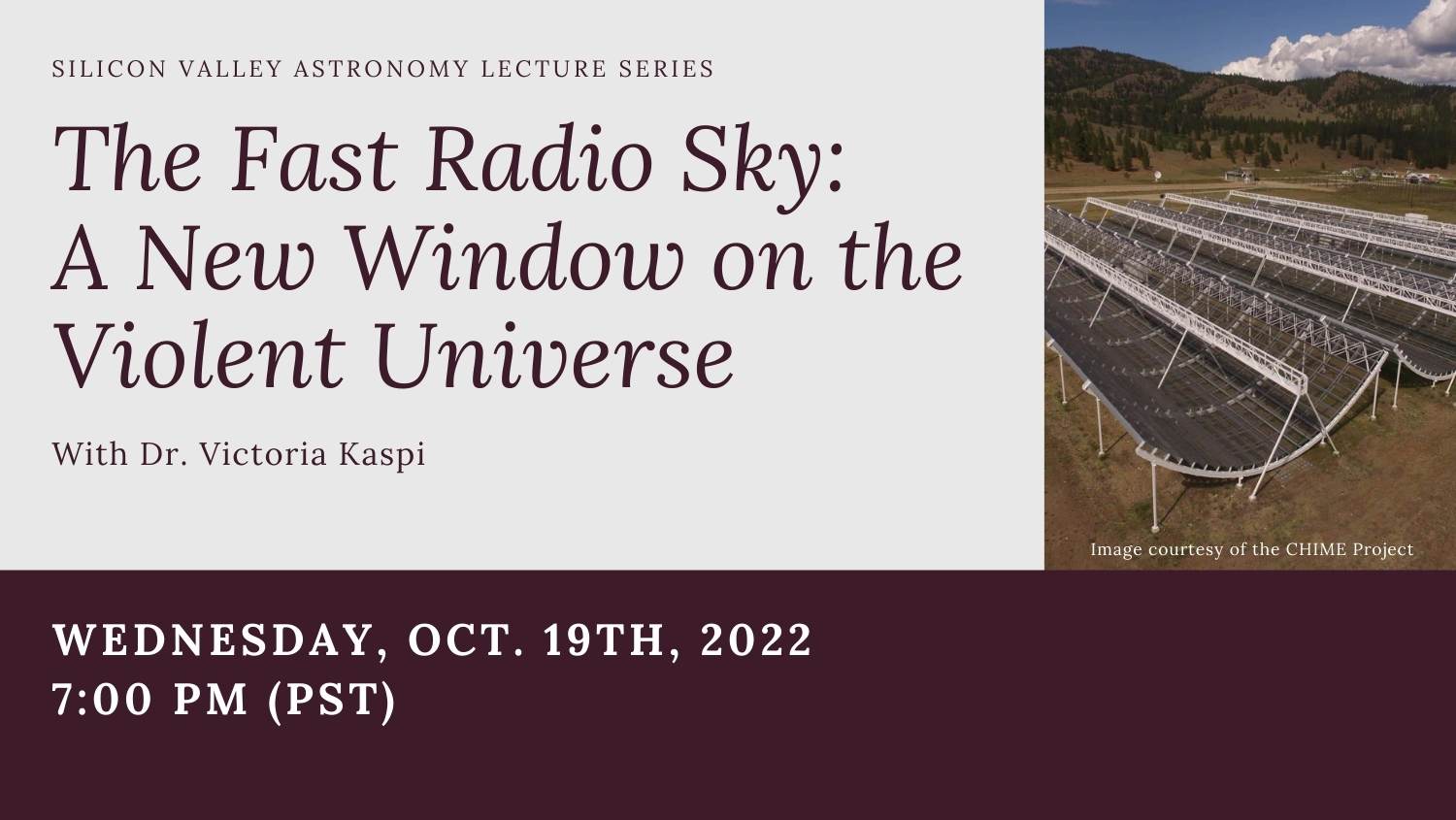The Fast Radio Sky: A New Window on the Violent Universe

Tags: Silicon Valley Astronomy Lecture Series, Astronomy
Time: Wednesday, Oct 19, 2022 -
Location: Online
Online on YouTube: http://www.youtube.com/SVAstronomyLectures
[if you go to this address the evening of the talk you will see and be able to participate in the live event; we will also make a recording]
The talk is part of the Silicon Valley Astronomy Lecture Series (through Foothill College), now in its 23rd year.
When we look at the night sky, we see a backdrop that appears timeless and unchanging. However, in reality, the Universe is teeming with activity -- often explosive and cataclysmic. One recently recognized celestial phenomenon is that of "Fast Radio Bursts": very short bursts of radio light coming from far outside our Milky Way galaxy, and representing explosions of enormous proportion. Their origin is presently unknown. Dr. Kaspi will describe the Fast Radio Burst phenomenon, and explain how an innovative new Canadian radio telescope, CHIME, is making huge progress in unravelling these mysterious cosmic events.
Victoria Kaspi holds the Lorne Trottier Chair in Astrophysics and Cosmology at McGill University and is the inaugural Director of the McGill Space Institute. Prof. Kaspi uses techniques of radio and X-ray astronomy to study pulsars, neutron stars, and magnetars, all representing the last stage in the life of stars significantly more massive than our Sun. Since 2014, she has begun working on Fast Radio Bursts, a newly recognized astrophysical phenomenon involving remarkably short radio bursts of unknown origin, and is presently the Principal Investigator on the CHIME Fast Radio Burst Project. Prof. Kaspi has been the recipient of numerous awards and honors, including the 2021 Shaw Prize in Astronomy, and the 2022 Albert Einstein World Award of Science.
The lecture is co-sponsored by:
- The Foothill College Science, Tech, Engineering & Math Division
- The SETI Institute
- The Astronomical Society of the Pacific
- The University of California Observatories (including Lick Observatory).
Past lectures in the series can also be found on YouTube at: http://youtube.com/svastronomylectures and as audio podcasts at: https://www.buzzsprout.com/1805595
